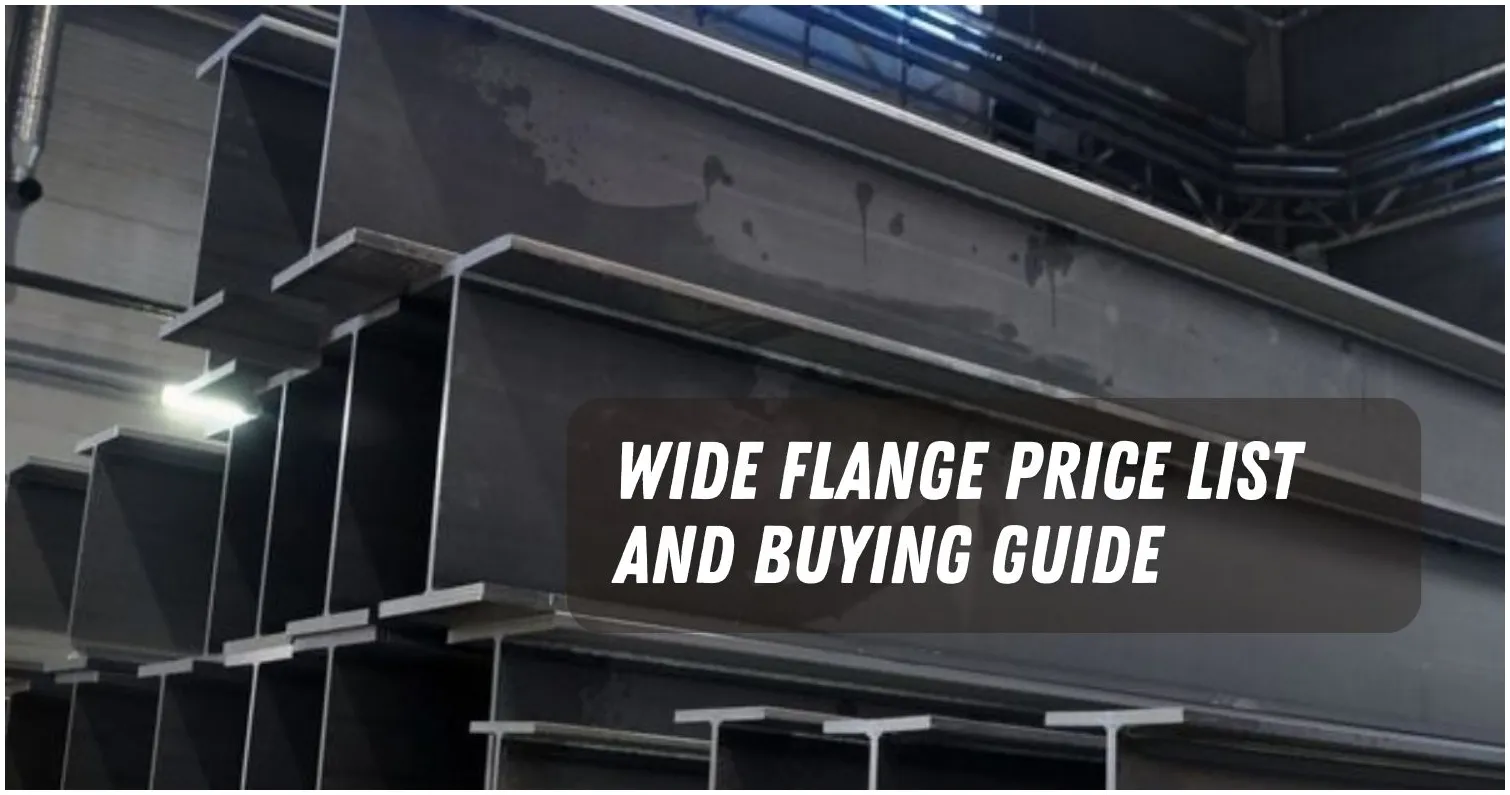Wide flange could be a good choice for your construction jobs if you need something strong and flexible with reasonable price.
It is a type of steel beam that has a large surface area on both sides of the web, which is the vertical part of the beam.
Wide flange beams, which range in price from ₱1,462 to ₱54,230, are often used to support the frame of buildings, bridges, and other structures.
In this piece, we’ll talk about what wide flange price list in the Philippines is, as well as its standard sizes, uses, pros and cons, and many other things.
What is Wide Flange?

Wide flange is a term for a certain type of steel beam that has a wide flange on both sides of the web.
The flange is the part of the beam that is flat and gives it strength and support.
Wide flange beams are also known as H-beams, universal beams, and W-beams.
The name “wide flange” comes from the fact that the flanges are wider than normal American or European beams.
Wide Flange Standard Size

Wide flange beams come in different standard sizes that change depending on the area and the manufacturer.
This beams usually have a height (h), a width (b), a web thickness (t), and a flange thickness (T). Most of the time, millimeters or inches are used to describe the sizes.
Standard sizes for wide flange beams in the Philippines are based on the Japanese Industrial Standards (JIS).
The JIS sizes go from 100 mm x 100 mm to 900 mm x 300 mm. In the Philippines, these are the most popular sizes:
- W100x100
- W150x150
- W200x200
- W250x250
- W300x300
- W350x350
- W400x400
- W450x450
- W500x500
- W600x600
- W700x700
- W800x800
- W900x900
Uses of Wide Flange
Wide flange beams have many uses in various industries and applications. Some of the most common uses of wide flange are:
- As columns and pillars to support the weight of buildings and structures
- As beams and girders to span long distances and carry loads across floors and roofs
- As frames and trusses to form the skeleton of bridges, towers, cranes, and other structures
- As purlins and rafters to support roofing materials and provide ventilation
- As rails and tracks to guide vehicles and machinery
- As braces and reinforcements to prevent buckling and deformation
Wide Flange Price List

Size, grade, quality, number, location, and supplier are just a few of the variables that affect wide flange beam prices in the Philippines.
Demand, supply, exchange rates, inflation, and economic factors all affect the price. Here’s an example of a price list from a top seller in the Philippines.
| Size | Weight | Price per kg | Price per piece |
|---|---|---|---|
| W100x100 | 17.2 kg | ₱85 | ₱1,462 |
| W150x150 | 31.5 kg | ₱85 | ₱2,678 |
| W200x200 | 49.9 kg | ₱85 | ₱4,242 |
| W250x250 | 72.4 kg | ₱85 | ₱6,154 |
| W300x300 | 94 kg | ₱85 | ₱7,990 |
| W350x350 | 137 kg | ₱85 | ₱11,645 |
| W400x400 | 172 kg | ₱85 | ₱14,620 |
| W450x450 | 215 kg | ₱85 | ₱18,275 |
| W500x500 | 282 kg | ₱85 | ₱23,970 |
| W600x600 | 346 kg | ₱85 | ₱29,410 |
| W700x700 | 440 kg | ₱85 | ₱37,400 |
| W800x800 | 524 kg | ₱85 | ₱44,540 |
| W900x900 | 638 kg | ₱85 | ₱54,230 |
Note: The prices are just for reference and could change at any time without warning. The prices are based on the standard length of each piece, which is 6 meters.
The prices don’t include the value-added tax (VAT), delivery charges, and other fees.
Advantage and Disadvantage of a Wide Flange
When compared to other types of steel beams, wide flange beams have both pros and cons. Some of the pros and cons of wide flange beams are as follows:
Advantages:
- Wide flange beams have a high strength-to-weight ratio, which means they can hold up big loads with less material and weight.
- Wide flange beams have a lot of surface area, so they are less likely to bend or twist than narrow flange beams.
- Wide flange beams are all the same size and shape, which makes them easy to make, move, and put in place.
- Wide flange beams have a simple design, so they can work with a variety of connections, fasteners, and welds.
- Wide flange beams last a long time, which means they are strong and immune to corrosion, fire, and weather.
Disadvantages:
- Wide flange beams are more expensive than other types of steel beams because they cost a lot.
- Wide flange beams have a low visual value, which means that they don’t look very good.
- Wide flange beams have a large cross-section, which means they take up more room and lower the clearance height.
- Wide flange beams have a high thermal expansion, so when the temperature changes, they can bend or break.
Wide Flange vs I Beam

Wide flange beams and I beams are both kinds of steel beams that look and work the same.
But there are some differences that affect their function and uses:
- Wide-flange beams have wider ends, which makes them stronger and more stable in both ways.
- I beams have shorter flanges, which makes them less stable and strong on the sides.
- Wide flange beams are heavy, which means they can hold more weight, but they also take up more space and cost more.
- I beams are lighter, can hold lighter loads, and cost less to make and use less material.
- Wide-flange beams come in a wider range of normal sizes, giving you more choices and options on the market.
- I-beams come in fewer common sizes, so there are fewer choices and less of them on the market.
Things You Should Know about Wide Flange FAQ
- What is the most common flange size?
The most common flange size for wide flange beams is 150 mm x 150 mm or W150x150. This size is widely used for columns, pillars, frames, trusses, and other structural applications. - What happens if your flange is too big?
If your flange is too big for your application, you may encounter some problems such as:- Excessive weight and cost
- Reduced clearance height
- Increased thermal expansion
- Decreased aesthetic value
- What is wide flange made of?
Wide flange is made of steel, which is an alloy of iron and carbon. Steel is a strong and versatile material that can be shaped into different forms and grades. Steel can also be coated or treated to enhance its properties and appearance.
If you want to know how much wide flange costs in the Philippines, you should look at prices from different sources and try to work something out with them.
We hope this piece has helped you learn more about wide flange, its uses, prices, pros and cons, and how it compares to I beam.
[ratings]

